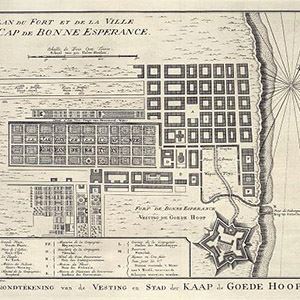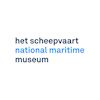
18. Oost 1, Maps & Marvels: Town plan of Cape Town
At the centre of this town plan of Cape Town, we can see the Kompanies Tuin, in other words the gardens of the Dutch East India Company. These gardens were initially created to provide fresh food for the crews of the East India Company, halfway through their voyage to Asia. But the climate of the Cape turned out to be so suitable for growing vegetables and fruit that the Kompanies Tuin soon acquired an international reputation. Ships from all corners of the Earth brought new varieties fruits and vegetables, such as cucumbers from India, bananas from South Asia, tea from Japan and watermelons from Brazil. A garden with medicinal plants was also added. The East India Company’s gardens became famous both for the range of plants, and their breath-taking location at the foot of Table Mountain. The food-producing role of the gardens was gradually taken over by farming ventures in the Cape and its surrounding areas. Farmers from the Dutch Republic established themselves on the Cape and laid claim to ever-expanding amounts of land. This increasingly restricted the freedom of movement of the local population, the nomadic Khoi.


The National Maritime Museum
Het Scheepvaartmuseum (The National Maritime Museum) shows the strong connection between the maritime world and society as a whole, and more specifically the impact of this on the lives of many individuals. The collection of The National Maritime Museum is one of the largest and most notable maritime collections in the world with approximately 400,000 objects, including paintings, models of ships, navigation instruments, and maps of the world. Discover 500 years of Dutch Maritime history as well as its strong links to today’s society and the society of the future.
- Kattenburgerplein 1
- Amsterdam Netherlands
- (020) 52 32 222
- www.hetscheepvaartmuseum.nl
